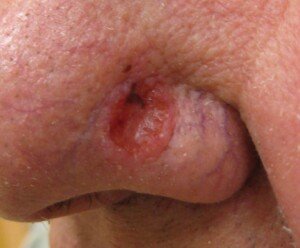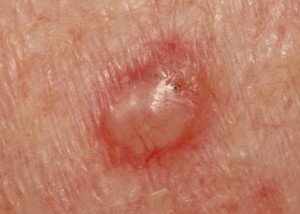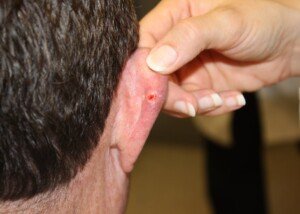Why is it that whenever you hear that someone has basal cell carcinoma, it seems that it’s always on their nose?
What IS it about the nose that attracts this type of cancer more than any other body part?
“Eighty-five percent of basal cell carcinomas affect the head with the following distribution,” says Adam J. Mamelak, MD, a board certified dermatologist and founder of Sanova Dermatology in Austin, TX.
• Nose (25.09%)
• Scalp (15.44%)
• Area around the eye (10.03%)
• Cheek (10.42%)
• Area around the ear (9.65%)
• Forehead (6.17%)
• Upper lip (3.86 %)
• Lower lip (1.15 %)
• Chin (1.15 %)
• Neck (0.77 %)
Basal cell carcinoma is the most common cancer in the world. Though this malignancy is very rarely deadly, it can require extensive surgery on the face that can result in noticeable scarring.
If left untreated, it will cause local destruction, even invading nearby bone, and this local infiltration can become quite gruesome. Warning: graphic image below:
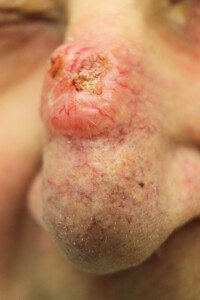
BCC. Bin im Garten, CreativeCommons
Thus, a diagnosis of basal cell carcinoma is nothing to take lightly, though it’s always a huge relief to hear that a suspicious spot on the nose, or anywhere, is this type of cancer rather than the much deadlier melanoma.
So what makes basal cell carcinoma favor the nose more than any other facial location or even the scalp?
Dr. Mamelak explains, “Basal cell carcinoma (BCC) usually develops in sun-exposed areas of the skin.
“The nose protrudes from the face and is rarely covered. It can even catch sun when wearing certain types of caps.
“There is a strong relationship between BCC and hair follicles, which are often part or associated with the pores and sebaceous glands in the skin of our nose.”
Caps and Hats
It’s easy to assume that a cap or “sun hat” is shielding the nose, when in fact, some sun is still hitting the nose while you’re on the beach, hiking, playing volleyball, jogging, mowing the lawn or gardening.
Even if your hat has a five inch brim, you should still cover the nose with sunscreen. For extra-sensitive skin, a sunblock with titanium oxide or zinc oxide may work best.
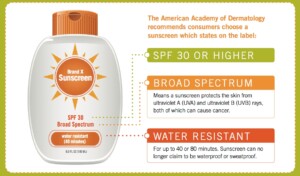
Also remember that harmful sun rays include those that we catch incidentally, such as while driving, walking the dog, working on the car or supervising the kids outdoors.
Basal Cell Carcinoma on the Nose
• Be alert to something that looks like a pimple or blemish but does not go away.
• Do not pick any new growth on the nose. If it’s benign it should resolve within a few weeks.
• If it sticks around, this doesn’t mean it’s cancer, but it DOES mean you should have it evaluated.
• Basal cell carcinoma on the nose appears as it does anywhere else on the body: a nodular-like or pimple-like growth that may be pearly white, flesh colored or pink colored. It may even be some shade of brown. It may also be flatter or patch-like.
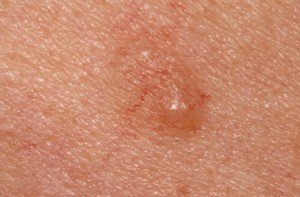
BCC. Shutterstock/Dermatology11
• Be especially suspicious for BCC if the growth has what appears to be red “spider veins” in it.
• It’s also important to know that a persistent pimple-like growth on one’s face or nose may be a melanoma – hence, the importance of an evaluation by a dermatologist.
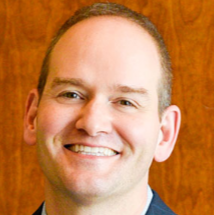 Dr. Mamelak focuses on the full breadth of dermatologic care, from cosmetic skin solutions to advanced skin cancer removal. He’s founder of the Austin Mohs Surgery Center, which is dedicated to the treatment and management of skin cancer.
Dr. Mamelak focuses on the full breadth of dermatologic care, from cosmetic skin solutions to advanced skin cancer removal. He’s founder of the Austin Mohs Surgery Center, which is dedicated to the treatment and management of skin cancer.
 Lorra Garrick has been covering medical, fitness and cybersecurity topics for many years, having written thousands of articles for print magazines and websites, including as a ghostwriter. She’s also a former ACE-certified personal trainer.
Lorra Garrick has been covering medical, fitness and cybersecurity topics for many years, having written thousands of articles for print magazines and websites, including as a ghostwriter. She’s also a former ACE-certified personal trainer.
.

